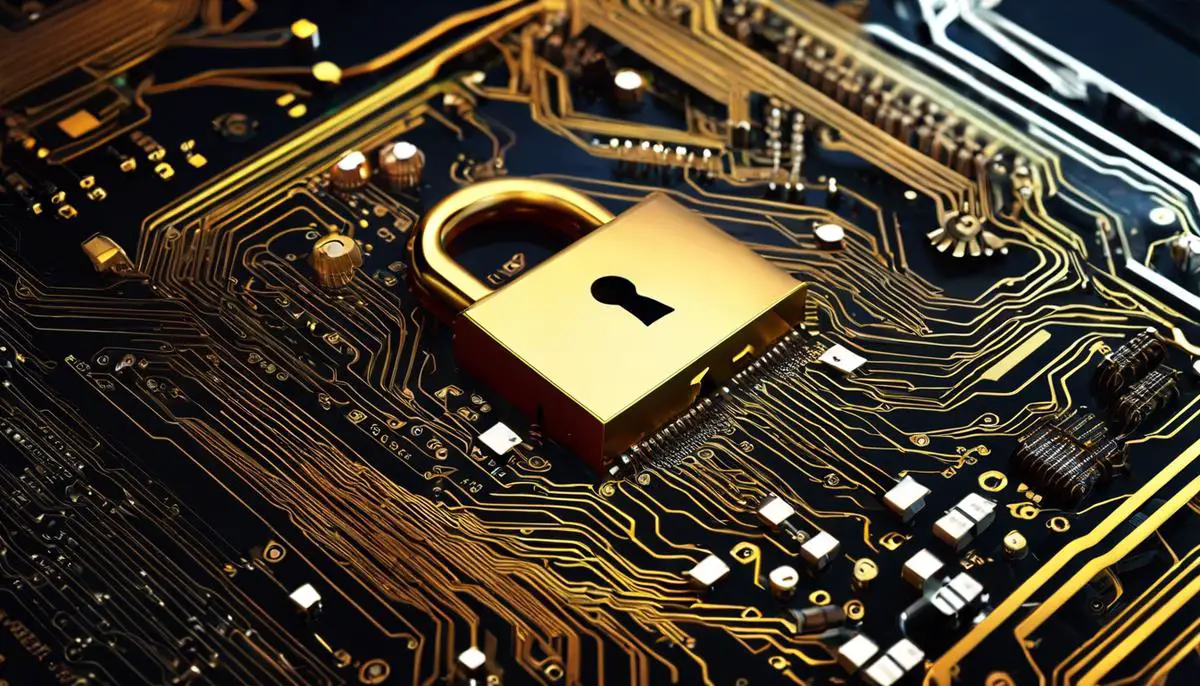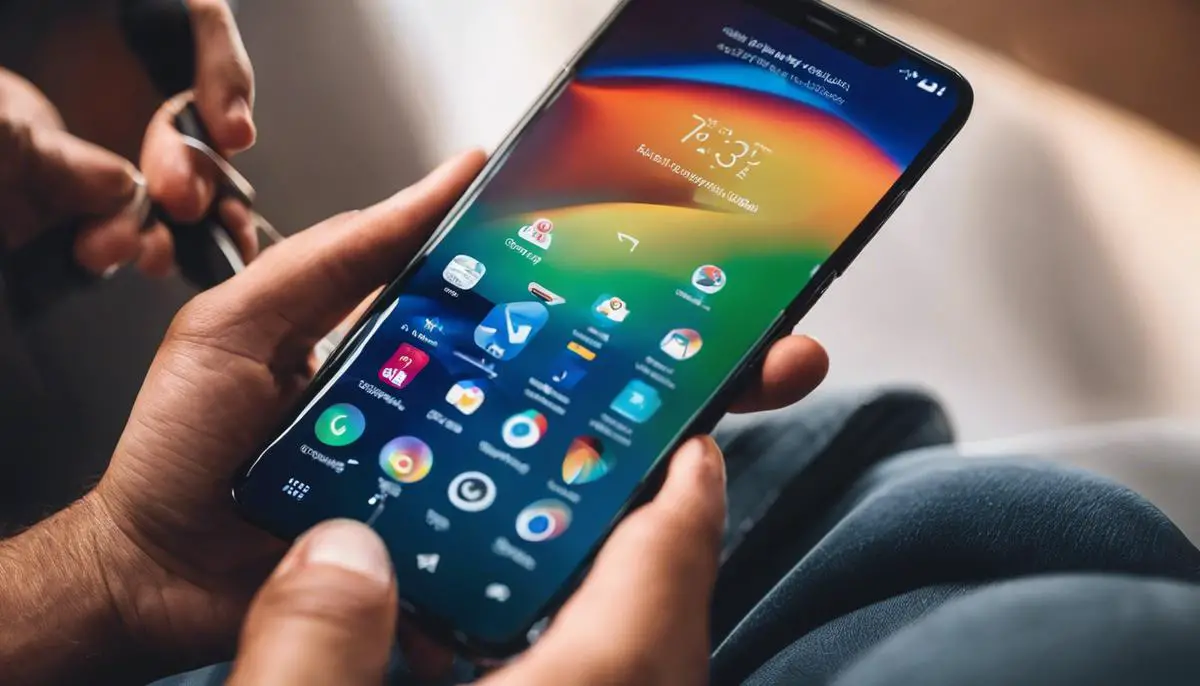
In the complex world of device customizations, understanding integral components such as bootloaders is imperative for any tech enthusiast. These components serve as gatekeepers, safeguarding the programming of devices like the Blu M8L Tablet. However, to truly personalize a device, one might need to cross these gates by unlocking the bootloader. This process, though somewhat austere, can open a treasure trove of possibilities including custom ROM installation which is renowned for offering improved device performance and customization options. In light of this, we delve into the logistics of what a bootloader is, why unlocking it could be necessary, and how to successfully unlock a bootloader expressly for the Blu M8L Tablet.
Understanding Bootloaders
Title: Essential Know-How: The Bootloader and Its Importance
In the grand scheme of technology, things that typically get all the attention are advanced gadgets, groundbreaking apps, and innovative software. But, today, we’ll be delving into one of the unsung heroes of tech: the bootloader. This might sound vaguely familiar, or perhaps completely alien, but once you’ve grasped the concept, you’ll marvel at this seemingly silent and invisible cog in the technological machine.
What is a Bootloader?
In its simplest definition, a bootloader is the set of instructions within the firmware of a device that guides the operating system once it boots up. In the tech world, they often use the analogy of a security guard guiding guests to their designated rooms: The guard doesn’t host the event, but without him, the attendees would be lost.
Why is a Bootloader Important?
The importance of a bootloader lies in its role in starting up a device. To boot a device, the system has to start some processes, check some systems, and verify the legitimacy of operations. It’s the first program that loads when you start up the device, performing hardware checks and its main task — loading the operating system into memory, and then transferring control to the OS.
The bootloader wraps itself around the bare hardware of the computer or mobile device, and through this, bridges the gap between the hardware and your operating system, whether it’s Windows, Linux, iOS, Android or any other.
Locked and Unlocked Bootloaders
Unless you’re really into tech, bootloader factories coming locked doesn’t get much thought. A locked bootloader is more secure and doesn’t allow software not passed by the vendor. Unlocking the bootloader, on the other hand, opens up many doors, particularly for enthusiasts who enjoy tweaking, modding, and customizing their devices.
Unlocking the bootloader can enable the user to install custom ROMs, root their device, or install OS updates manually. However, it’s essential to note that unlocking is not a casual endeavor. It bypasses restrictions implemented by manufacturers and vendors for a reason. It can void your warranty, and if done wrong, it can end up bricking your device completely.
A Deeper Understanding of your Tech
Gaining a better understanding of the backbone of your device’s operation can significantly enhance your technological know-how and your power as an end-user. Embracing the knowledge about bootloaders and the integral role they play in running your devices can be an epiphany, unveiling how technology truly works beyond the screen.
In the realm of technology, every bit of knowledge counts. As enthusiasts, we must remember that understanding these ‘lesser-knowns’ lays the foundation for our efficiency in using and navigating this technologically driven world. It’s not just about the flashy apps or gaming graphics, but rather about the unseen gears that keep the tech world turning, like the mighty bootloader.

Steps to Unlock Bootloader
Unlocking a bootloader is no noob’s game; it involves tinkering with embedded codes. It’s a perfect fit for a tech enthusiast. It’s like a secret handshake that grants backstage pass to the operating system that fuels your device. But first, let’s brush through the prerequisites.
- Device Backup: Critical. No guarantees from crashing the party. Store everything you hold dear; pictures, videos, files, everything. Cloud or PC, it’s your call.
- Battery Backup: Charging up to 60% should do the trick. An unexpected shutdown is the last thing your device needs.
- USB Debugging: Activate it. Go to Developer Options, and if it isn’t available, tap ‘Build Number’ found in ‘About Phone’ 7 times, and voila! Developer Options is all yours. Toggle on USB Debugging.
- Unlock Code: Depending on the device, this varies. HTC provides it directly upon request. For Mi, apply to Mi Unlock Status. Google’s devices? No code required. Consider contacting the device’s manufacturer or carrier for precise steps.
Let’s now unlock the bootloader by following these steps:
- ADB and Fastboot Installation: Android Debug Bridge (ADB) and Fastboot. Vital tools to interact with your device. Install. Remember the file location; you’ll need it.
- Plug Device to PC: Connect your device via USB. Launch command prompt or terminal.
- Bootloader Mode: Navigate to the ADB and Fastboot folder. Launch a command prompt. Type ‘adb reboot bootloader’, press enter. Your device will boot in bootloader mode.
- Unlock Code Application: If a code is required, type ‘fastboot oem unlock (your unlock code)’, press enter. For Google devices, type ‘fastboot flashing unlock’, press enter.
- Confirmation: Device will request confirmation, use the volume keys to navigate and the power button to confirm bootloader unlock.
- Reboot: Now, type ‘fastboot reboot’. Voila, unlocked bootloader.
Note of caution, an unlocked bootloader may compromise device security and void warranty. Better satisfy your curiosity on a secondary device.
This goes way beyond coding proficiency. It breeds critical thinking, problem-solving, logical reasoning. It’s deciphering chess in tech’s language. Amateur or tech adept, remember the rabbit-hole runs deep. Real deep.

Photo by markusspiske on Unsplash
Post-unlocking procedures
Title: The Next Steps After Successfully Unlocking The Bootloader
If you’ve explored the inner mechanisms of your device to the point of successfully unlocking your bootloader, kudos to you! You’ve now stepped into the realm of customized device control where your realm truly extends beyond app updates and software roll-outs. But now what? This article cuts straight to point and brings you the next priorities and steps to take within this newfound level of control.
First and foremost after unlocking the bootloader – Install a custom recovery. Think of this as a parachute. Should things head south during your future tinkering, a custom recovery like TeamWin Recovery Project (TWRP) or ClockworkMod (CWM) provides a lifeline. It lets you back up the entire device, install custom ROMs, and perform partition-based tasks your original software recovery could only dream of. TWRP or CWM should be your next step.
Once recovery is established, perform a System Backup. With your bootloader unlocked and custom recovery in place, it’s time to play it safe. Dive into your recovery program and perform a system backup, storing your data in a safe location, separate from your device. This will be your fallback should any future explorations go awry.
Next, remember that your realm now includes a wide array of available ROMs. Having accomplished the preparation stages, applying a custom ROM to get rid of bloatware, ramp up your battery life, or tweak your UI to your taste becomes a real option. Remember to thoroughly research, ensuring your chosen ROM is both trusted and compatible with your device.
Continuing the customization, consider CPU overclocking. This step is for those who crave performance speed. Overclocking unlocks a higher clock speed on your device’s processor, getting you blisteringly fast performance. But be cautious, as it can drain battery life and generate excessive heat. The decision to overclock is in your hands, so weigh the pros and cons, run some tests and figure what speed/clock ratio suits your needs.
Xposed Framework would be the cherry to complete your device overhaul. This app assists in customizing your device down to the minuscule details without altering APKs or flashing ROMs. You can customize battery icons, alter notification settings, and even tweak system-level processes.
With the power granted by an unlocked bootloader, it’s also worth mentioning responsibility. Your device privacy is now in your hands, tool up on ways to fend off any potential security threats and privacy invasions that may be opportunistic towards your now-unlocked device.
Finally, continuous learning comes next. The tech world evolves at a supersonic pace. Keep abreast with the latest developments. Attending developer forums, reading digital magazines, joining tech communities – keep the channels open for the flow of new knowledge.
Stepping into the universe of unlocked bootloader is thrilling, enabling you to transform your device into a personal haven of technology that stretches way beyond pre-installed capabilities. Recognizing how far you’ve come is just as important as pinpointing your next steps. Happy tech journeying!

Mastering the art of bootloader unlocking empowers you with the ability to transcend the default boundaries set by device manufacturers. Armed with this knowledge and awareness, you can now unlock the Blu M8L tablet’s bootloader, paving the way for software modifications that better resonate with your digital needs and preferences. Post-unlocking procedures, ranging from installing custom ROMs or recovery resources, to potentially relocking the bootloader, ensure that your device continues to function optimally. Embarking on this journey of bootloader unlocking and device personalization, you’ve successfully taken a bold step towards true digital freedom, making your Blu M8L Tablet fully yours in function and form.
